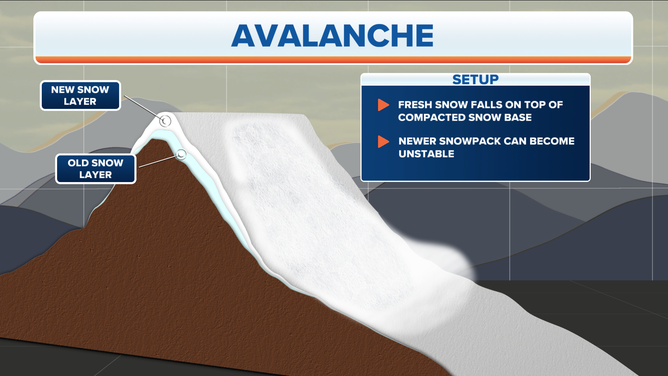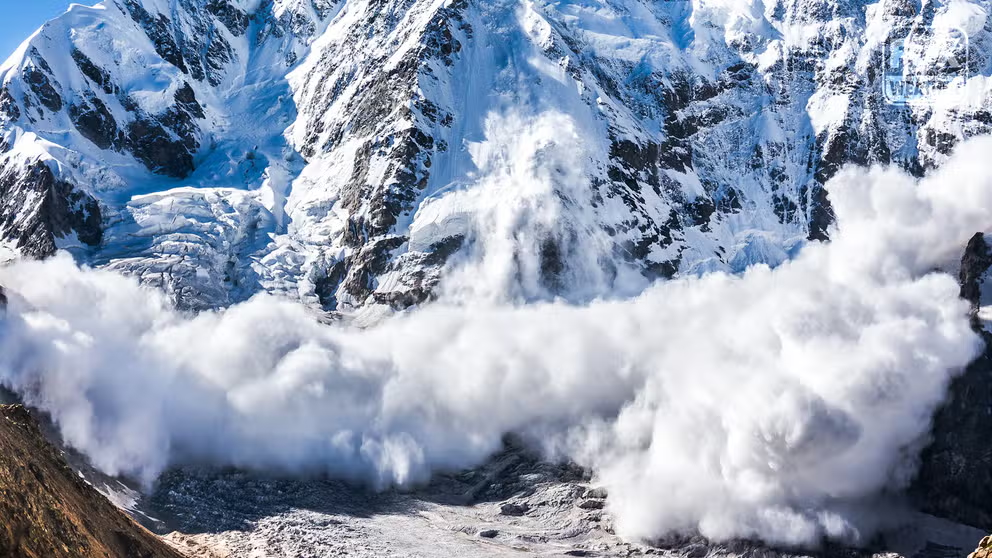Dangers of avalanches, and what to do if an avalanche is coming at you
An avalanche is a rapid flow of snow down a mountain, hill or any steep incline. They can trigger from below or from a distance. Avalanches can happen anytime there is snow, but the risk is increased at certain times of the year.
Avalanches explained: what to know and how to stay safe
An avalanche is a rapid flow of snow down a mountain, hill or any steep incline.
Being stuck in an avalanche can cause severe consequences and be deadly. It is essential to know how to stay safe when on the slopes.
What is an avalanche?
An avalanche is a rapid flow of snow down a mountain, hill or any steep incline. They can trigger from below or from a distance.
Avalanches can happen anytime there is snow, but the risk is increased at certain times of the year.
They often occur when fresh new snow falls on top of an already compacted snow base. That newer snow becomes unstable, triggering an avalanche.

(FOX Weather)
Heavy snow and strong winds can also result in natural avalanches, but the National Weather Service says that manmade avalanches are much more common.
"In 90% of avalanche incidents, the snow slides are triggered by the victim or someone in the victim's party," the NWS says. "Avalanches kill more than 150 people worldwide each year."
The NWS issues Avalanche Alerts and sends forecast information to regional avalanche forecast centers to help keep people safe.
Utah forecaster on avalanche warnings
Craig Gordon of the Utah Avalanche Center on the danger involved when a warning is issued.
How to survive an avalanche
While avalanches are sudden, there are usually warning signs. Here are tips from the NWS on how to stay safe while you are on the slopes:
First, know the three factors required for an avalanche:
- Slope - Avalanches generally occur on slopes steeper than 30 degrees. So, determine if you are on or below slopes that can avalanche.
- Snowpack - Recent avalanches, shooting cracks, and "whumping" are signs of unstable snow. Find out if the snow is stable.
- Trigger - Sometimes, it doesn't take much to tip the balance; people, new snow, and wind are common triggers.

Skiing on a snowy mountain.
(Jeremy Bishop)
Also, equip yourself with the right gear and learn how to use it. Have these three avalanche safety essentials in your pack:
- Transceiver: so you can be found if covered by the snow.
- Shovel: so you can dig out your partner.
- Probe: so you can locate someone who the snow has covered.
The NWS notes that avalanche survival rates plummet after about 15 minutes for victims who do not die from trauma. To make sure you can apply ways to quickly escape an avalanche, practice realistic scenarios prior to hitting the slopes.
You should also stay up-to-date about the latest snowpack conditions by referring to your local avalanche center.
Meet the ski trail map artist who helps you navigate the slopes
For more than three decades, James Niehues has blended cartography and artistry to create ski trail maps that are appreciated for their beauty as well as their usefulness.


